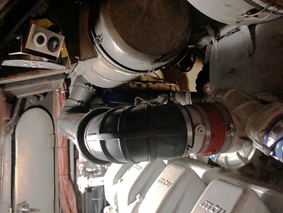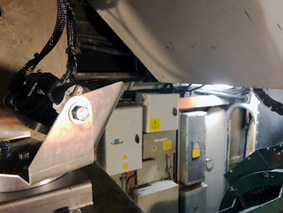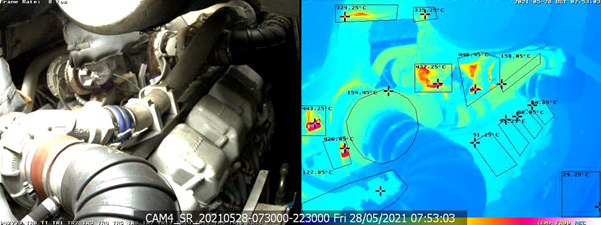ON-BOARD RCM SYSTEM
Cameras have been mounted on-board a ScotRail HST Power Car monitoring temperatures of the engine and the alternator. The cameras can be remotely accessed by Rail Innovations using the system’s independent 4G Router in order to view the live video, to download thermal recordings or to change the camera settings. The cameras can be configured with up to 20 zones per camera, each assigned with its own temperature threshold.

Camera (top left) mounted on the A-side of an HST Power Car monitoring the engine and its turbochargers. Each camera comprises an optical and a thermal sensor and is mounted on an adjustable mount to enable to field of view to be altered.

The camera mounted on the central equipment cubicle of the Power Car Clean Room, monitoring the alternators (traction & auxiliary) and some of the equipment cabinets.
The trial cameras have zones set up to monitor the temperatures of the four turbochargers and cylinder head covers on the diesel engine, plus the alternator casing and exhaust system, plus electrical equipment cabinets - including the Rail Innovations equipment cabinet!

View of the Engine Room camera showing the zones set to monitor the 4 turbochargers, engine cylinder head covers and pipework. An over-temperature alarm threshold has been set for each zone.
Individual temperature limits have been assigned to each zone and the trial has proven that emails are automatically sent to Rail Innovations in the event that any one of these thresholds are exceeded. Rail Innovations is then in a position to advise the TOC/FOC so that the operator can intervene with Planned Preventative Maintenance to prevent an in-service failure.